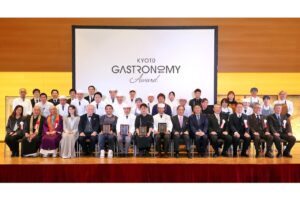
Speaking of the New Year's blessings,The Seven Gods of Good Fortune.is familiar.Ebisuten for prosperous business, Daikokuten for a good harvest and good fortune, Bishamonten, renowned as the god of military fortune, Benzaiten, the goddess of artistic improvement, Jurojin for longevity and healing of illness, Fukurokuju for health and longevity, and Hotei for good fortune and childbirth.The word "mourners" is used to refer to the following people. Of these, only Hotei is said to have been a real person.
However, instead of a god that has been familiar to us for a long time, theMany things are surprisingly unknown, including the roots.
Belief in the seven gods of good fortune spread in the Muromachi period (1336-1573) with the development of commerce in Kyoto.The record shows that in 1420, a furyu procession in the shape of the Seven Lucky Gods was held in Fushimi. According to records, in 1420 (Oei 2), a furyu procession in the shape of the Seven Gods of Good Fortune was held in Fushimi, and the costumes of the Seven Gods of Good Fortune also appeared at festivals, fairs, and other occasions.
And around this time, bandits dressed up as the Seven Gods of Good Fortune ran rampant in the streets of Kyoto. The people whose houses were invaded by the bandits were said to be overjoyed that the god of good fortune had arrived, even though they were dealing with bandits. and they willingly gave their possessions to the bandits. This is how widespread the belief in the Seven Gods of Good Fortune was among the common people.
When Kyoto was devastated by the Onin War, people welcomed the Seven Gods of Good Fortune as gods of good fortune, and their culture took root in the local people's culture.
In the Edo period (1603-1867), the custom of the first dream on January 2 spread.The first dream of the year is a dream of the beginning of the year. The idea is to divine the good fortune of the year according to the good or bad dreams one has at the beginning of the year. Naturally, everyone wishes to have a good dream. So, here it is,If you sleep with a picture of the Seven Gods of Good Fortune on a treasure ship under your pillow, you will have a good dream and gain the good fortune of the Seven Gods of Good Fortune."and other folk beliefs become popular. A picture of a treasure ship was painted with lucky charms, such as rice bales, gold and silver, and a "hidden straw raincoat" (to hide from evil spirits), and carried the Seven Gods of Good Luck. If a person had a good dream, he or she would put the picture of the treasure ship in his or her pocket and wish for good fortune in the coming year.
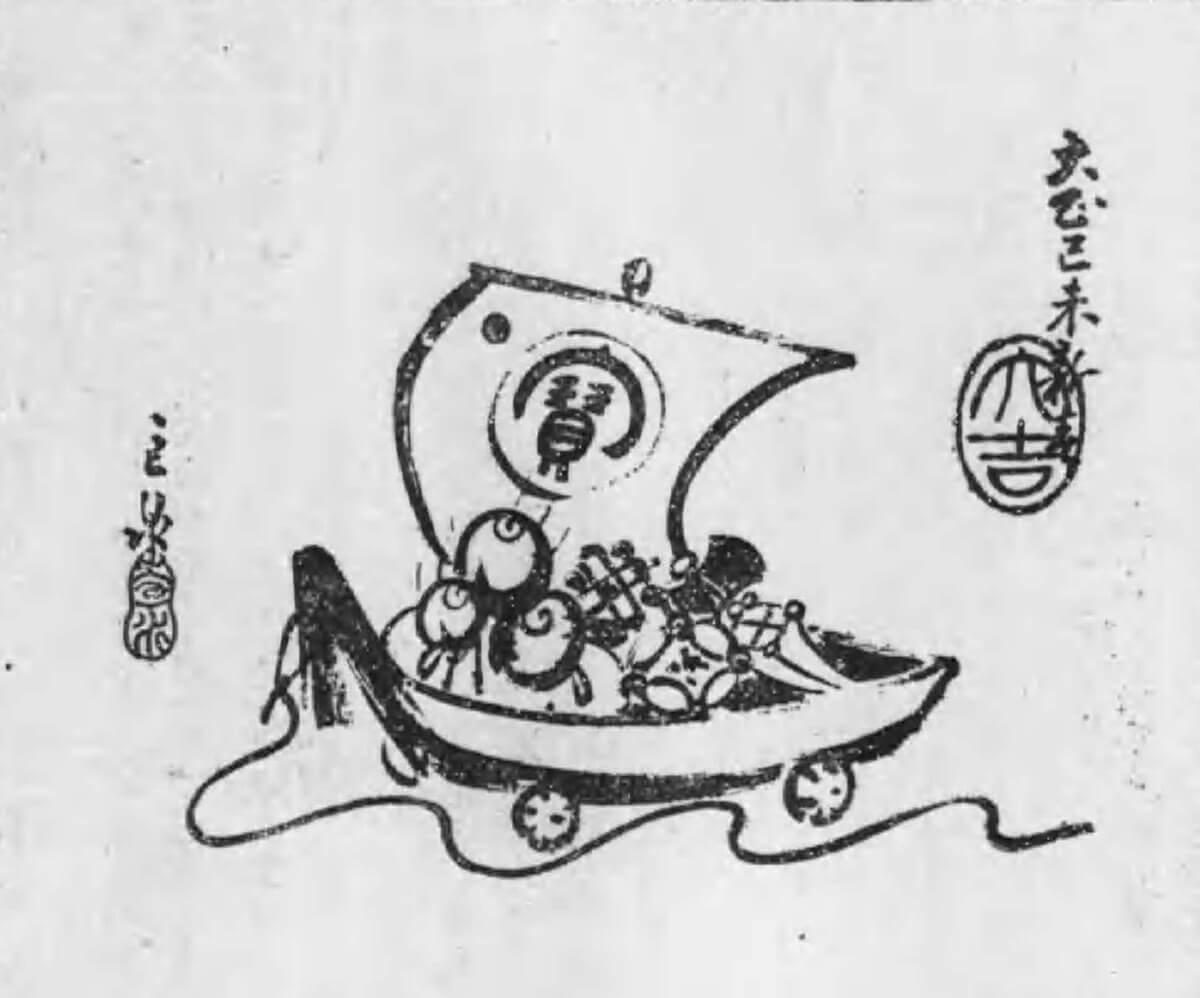
Mermaid . 4 (National Diet Library Digital Collections(From the collection)
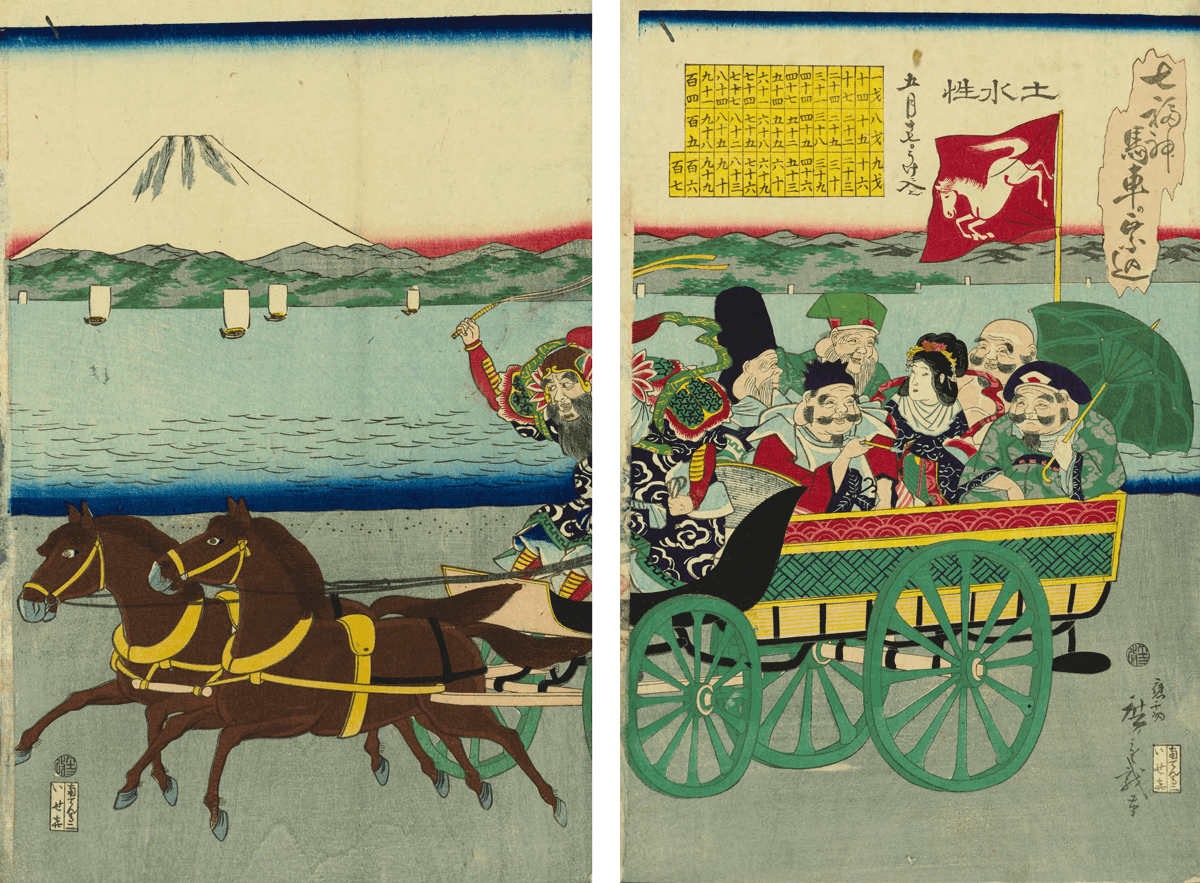
Two items from the "Seven Lucky Gods Carriage Ride-in" (From the Digital Collections of the National Diet Library(See Section 2.1.2.).
Seven gods of good fortune riding in a carriage instead of a treasure ship. If you think Bishamonten is not there, he is in the Gonin!
Then, just in case,What to do if you have a nightmareThat said, there was a proper way to deal with it.The next morning, the picture of the Seven Gods of Good Fortune on a treasure boat should be washed down the river to pay for it.Originally, rather than having a good dream, it was more of a nightmare being floated away on a boat, i.e.The dream mistake of being rid of defilement is its archetype.It is said to be.
This Seven Gods of Good FortuneThe number "7Where did the "seven" come from? Many Buddhist terms have "seven" in them, and it is also said that it derives from the sutra, "Seven pains quickly destroyed, seven blessings quickly born," or that it is in honor of the Chinese "Seven Sages of the Bamboo Grove.
The "Miyako Shichifukujin mairi" has long been popular in Kyoto during the New Year's holiday.The Seven Gods of Good Fortune Mairi, which has now spread throughout the countryOriginated in KyotoIt seems that the
Ebisu Shrine (Ebisujin), Matsugasaki Daikokuten (Daikokuten), Toji Temple (Bishamonten), Rokuharamitsuji Temple (Benzaiten), Kakado (Jurojin), Akazan Zen-in (Fukurokuju), Manpukuji Temple (Hoteijin)refers to.
It is said that if you visit the shrine during the Matsu-no-uchi period of the New Year (in Kyoto, this period lasts until January 15), you will receive divine blessings, so you should definitely pay a visit. As for the order of visitation, it does not matter where you visit the shrines first.
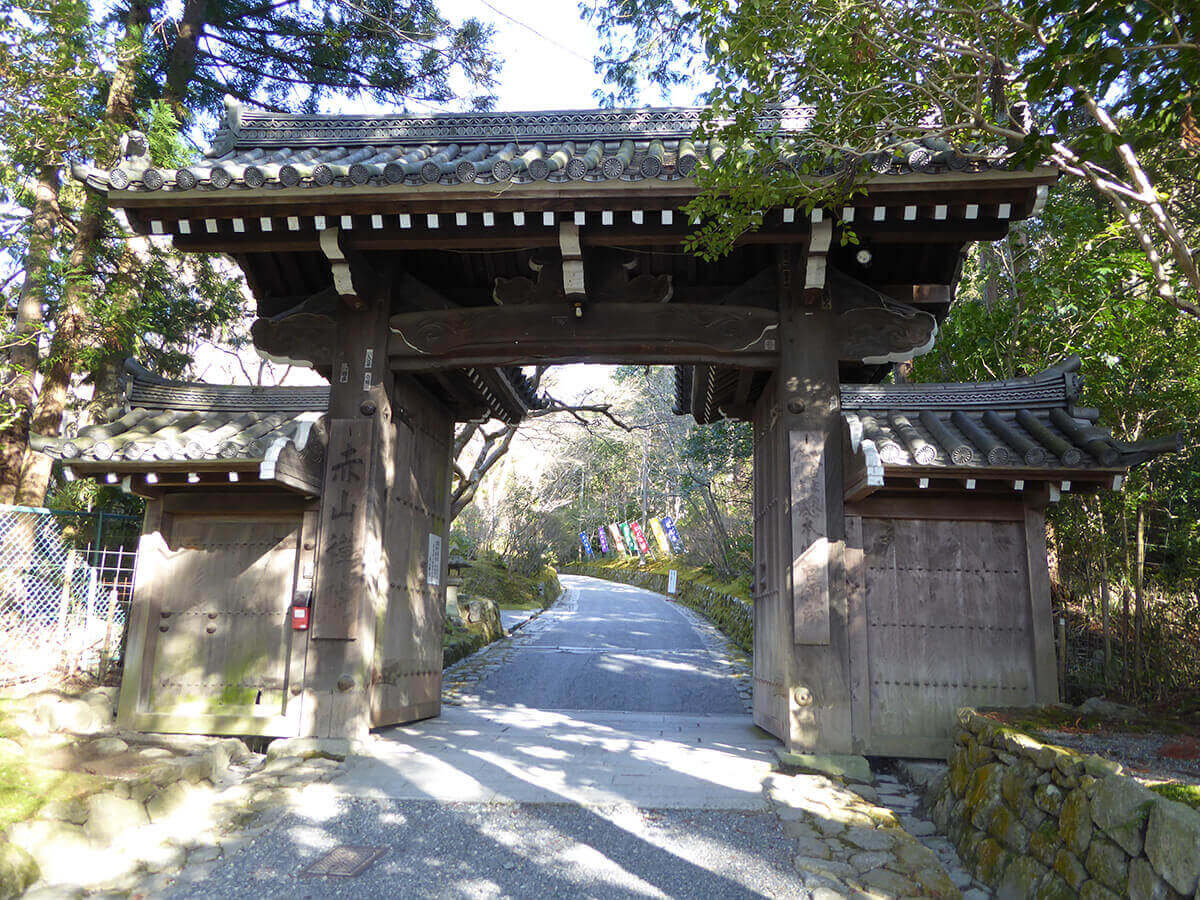
The gate of Akazan Zen-in, one of the Seven Lucky Gods of Tokyo
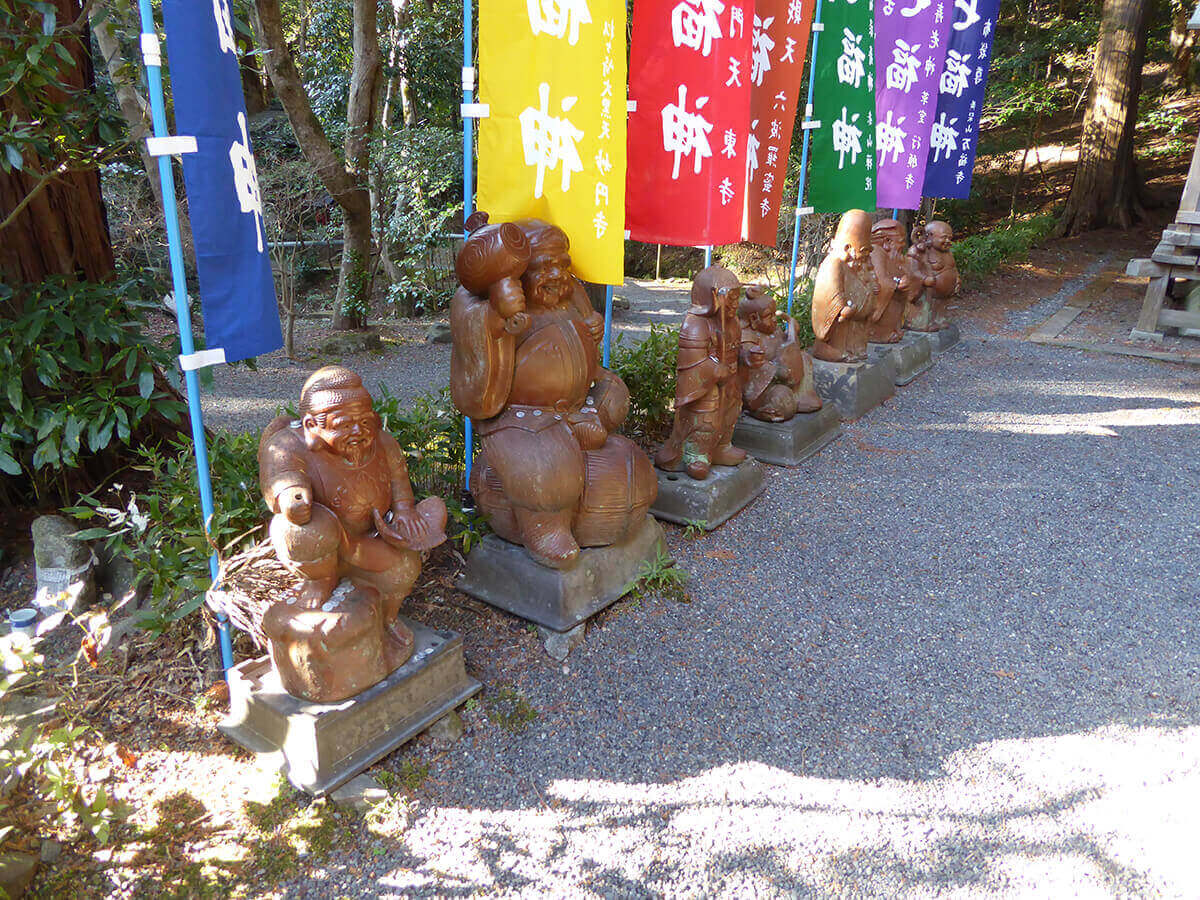
Statues of the Seven Deities of Good Fortune in the precincts of Akazan Zen-in
For those who find it difficult to make a pilgrimage to all seven shrines and temples, how about making the Sennyu-ji Seven Deities of Good Luck Tour? All the gods are enshrined in the pagodas within Sennyuji Temple.
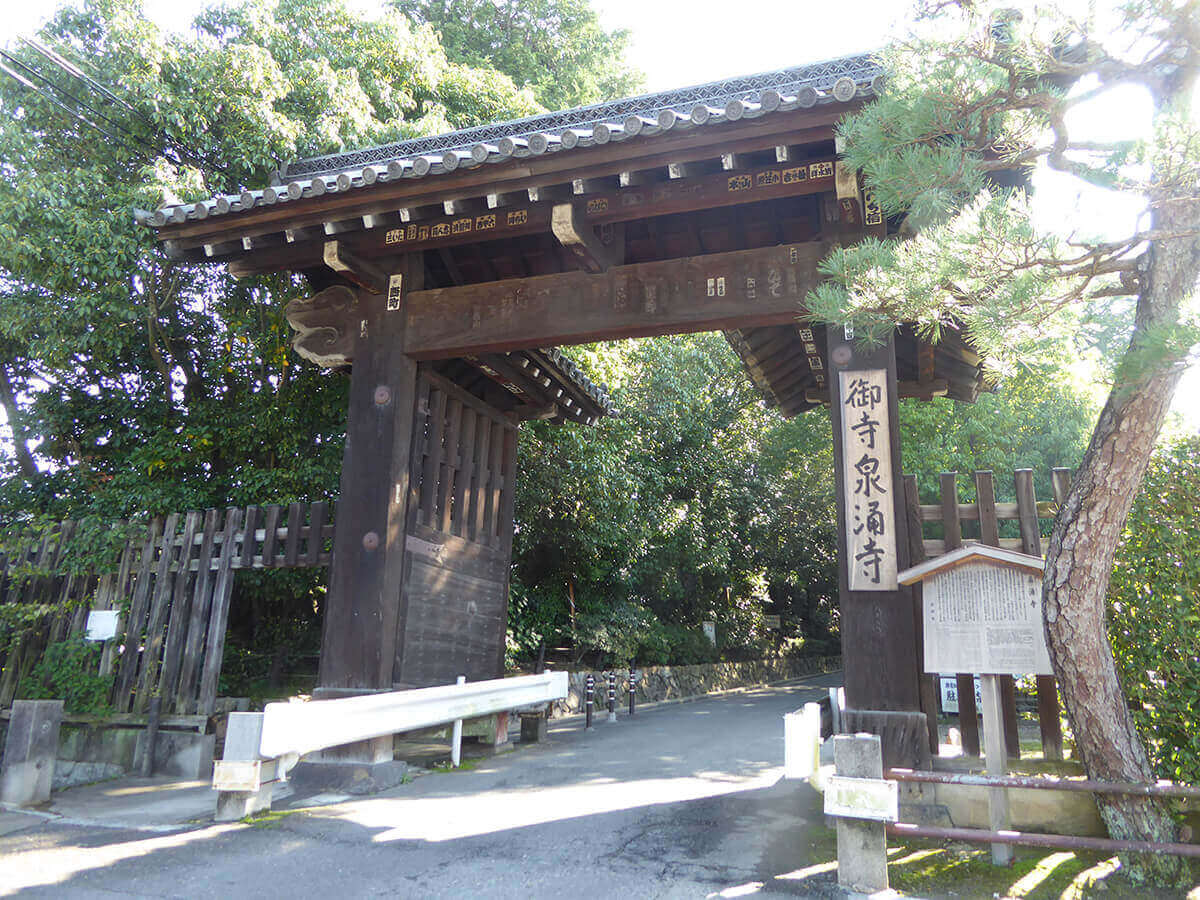
Sennyu-ji Temple
The year 2019 is the year in which a new name of the new year will be decided. To start the year off right, it would be fun to visit one of Kyoto's seven traditional festivals to unwind after the New Year's break and enjoy the blessings of the Seven Lucky Gods.
Tradition that exists everywhere in the city of Kyoto. It is not just a picture, it is secretly alive in this modern age and continues to coexist with people. The two of Office TO, who previously wrote a series of articles "Kyoto's Demon World Exploration" in the monthly magazine Leaf, explore the mysterious "different" world of Kyoto, which was created over 1200 years. I will unravel the story while actually visiting the place. .
 News
News Feature article
Feature article Featured event
Featured event